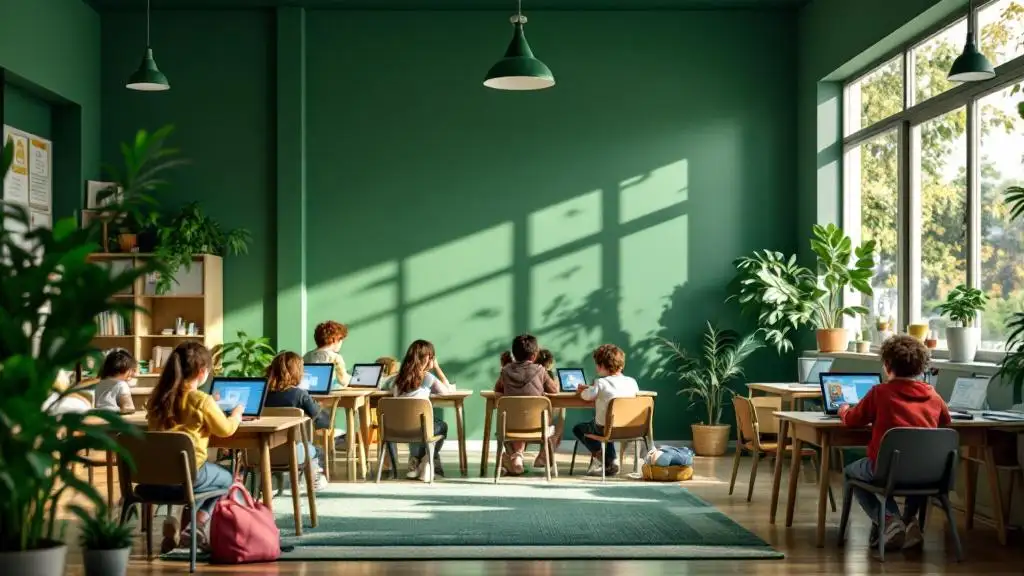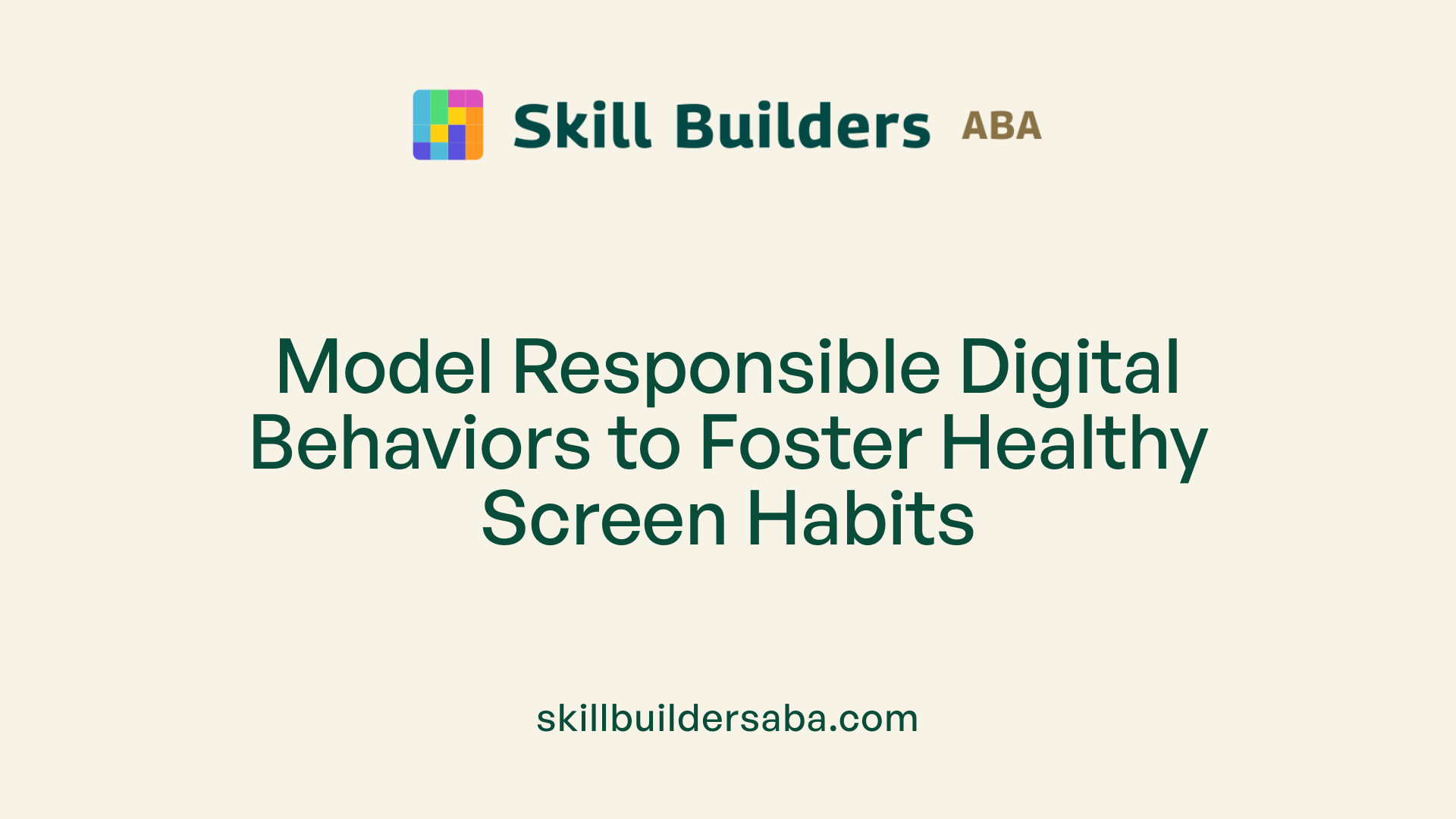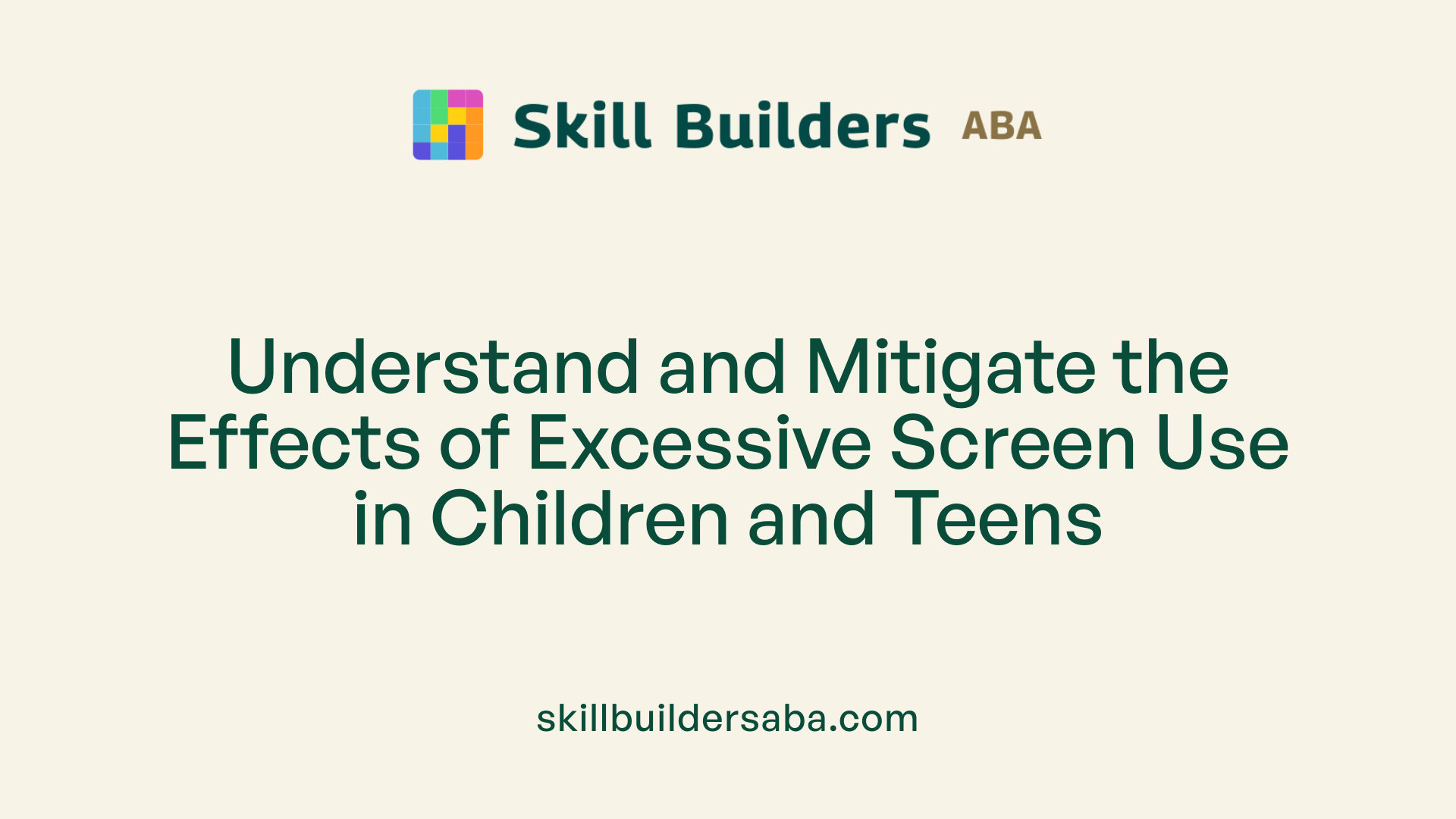
Building healthy screen habits using behavior strategies
Fostering Responsible Technology Use in Children and Teens
Understanding the importance of balanced screen habits
In today’s digital age, establishing healthy screen habits is crucial for children’s cognitive, emotional, and physical well-being. Excessive or poorly managed screen time can hinder development, disrupt sleep, and contribute to health issues. This article explores evidence-based, behavior strategies that parents, educators, and caregivers can implement to promote responsible and balanced technology use, ensuring children gain benefits from digital tools while minimizing risks.
Establishing Consistent and Age-Appropriate Screen Guidelines

How can screen time be made healthier and more balanced?
Creating a healthy digital environment involves setting clear, consistent, and age-appropriate rules for screen use. For young children, such as those under 18 months, screen time should be very limited, primarily involving interactive video chatting with caregivers. For preschoolers aged 2 to 5, media use should not exceed one hour each day, focusing on high-quality educational content. As children grow, guidelines should evolve, balancing screen time with physical activity, face-to-face social interactions, and offline hobbies.
Establishing routines that incorporate designated screen-free times and spaces is vital. For instance, screens should be avoided during meals and within an hour before bedtime to support sleep hygiene and family bonding. Promoting offline activities like outdoor play, reading, and family games encourages physical health and social-emotional development.
Parents and educators play a crucial role by modeling healthy digital behaviors. This can include managing personal device use during family times and engaging children in co-viewing media. These discussions about online safety, respectful online behavior, and digital citizenship aid in building responsible media habits.
To effectively monitor and enforce rules, many families utilize digital well-being apps like Apple’s ‘Screen Time,’ Google Family Link, or Qustodio. These tools help establish and track limits, create media plans, and set boundaries around content.
As children mature, it’s important to revisit and adjust media guidelines accordingly. Regular check-ins and flexible strategies accommodate changing needs and circumstances. Clear rules about content restrictions, tech-free zones, and device curfews help foster a balanced relationship with screens, supporting overall health and development.
In summary, fostering healthier and more balanced screen time requires a combination of setting appropriate limits, modeling positive behaviors, and encouraging diverse offline experiences. Regularly updating these practices ensures children develop healthy habits that support their physical, emotional, and cognitive growth.
Behavioral Strategies and Parental Modeling

How can parents and educators promote responsible and healthy screen habits?
Parents and educators play a crucial role in guiding children toward balanced and mindful screen use. One of the most effective approaches is modeling healthy digital behaviors. Children tend to imitate their caregivers; thus, demonstrating mindful device use—such as checking phones only during certain times and engaging fully in face-to-face interactions—sets a positive example.
Setting clear routines and establishing boundaries around screen time is equally important. Implementing specific limits, like no screens during meals or one hour of quality programming for young children, encourages discipline and moderation. Creating designated 'tech-free zones' in the home, such as bedrooms and dining areas, helps foster better sleep and strengthens family bonds.
Educational content should be prioritized, with parents curating age-appropriate apps, websites, and games. Parental controls can filter inappropriate content and track usage time, ensuring children access beneficial material.
Moreover, involving children in conversations about online safety, digital citizenship, and personal goals for screen time promotes autonomy and responsibility. Educators can reinforce these lessons through classroom discussions and digital literacy activities.
In addition to setting rules, promoting offline activities such as outdoor play, reading, and hobbies supports overall growth and provides a healthy balance to screen time.
Integrating these strategies through ongoing communication, family activities, and adaptable routines creates a supportive environment that fosters responsible digital habits. This comprehensive approach not only limits potential harms like reduced attention spans or sleep disruptions but also enhances children's social-emotional development.
Impact of Excessive Screen Time and Content Quality

What are the potential effects of excessive screen time on children and teens, and how can these be mitigated?
Excessive screen time can have several negative effects on young people. It can lead to delays in language development because kids learn best through face-to-face interactions, which are reduced when they spend more time engaged with screens.
In addition, intense exposure to fast-paced or passive content can decrease attention spans and impair cognitive functions such as memory and focus. Mental health issues are also common, with children experiencing higher risks of depression, anxiety, and behavioral problems like aggression or social withdrawal.
Physical health suffers as well. Prolonged screen use contributes to eye strain, dry eyes, and the development of myopia. Poor posture from prolonged sitting and a sedentary lifestyle increases the risk of obesity and related health problems.
To reduce these risks, parents and caregivers should set clear limits on screen time—such as one hour daily for children aged 2 to 5—and enforce daily routines that include offline activities. Creating device-free zones, like bedrooms and dining areas, helps foster face-to-face interactions and better sleep.
Quality content programming is essential. Educational and age-appropriate media enhance learning and engagement, while active participation in digital activities, such as creative apps and problem-solving games, offers more benefits than passive consumption.
Balancing screen use with outdoor play, physical activity, and offline hobbies such as reading promotes holistic development. Teaching responsible digital citizenship and monitoring content access through parental controls are also vital.
Through these strategies—limiting screens, promoting active and meaningful use, and encouraging real-world interactions—children can enjoy the benefits of technology without succumbing to its drawbacks.
Creating a Supportive Environment for Digital Well-being

Designing device-free zones and times
Creating spaces and moments where screens are not allowed is essential for fostering healthy habits. Designating areas like the dining room and bedrooms as device-free zones encourages face-to-face interactions and family bonding. Establishing 'tech curfews'—such as no screens one hour before sleep—helps improve sleep quality and reduces blue light exposure that interferes with melatonin production.
Implementing these zones and times also helps children associate certain environments and routines with offline activities. This structural approach simplifies the enforcement of boundaries and promotes a balanced lifestyle.
Using digital well-being apps and tools
Technology itself offers solutions to manage screen time effectively. Parental control apps like Apple’s ‘Screen Time’, Google Family Link, and Qustodio enable parents to set specific limits, monitor usage, and filter inappropriate content.
These tools can provide insights into children’s digital habits, allowing families to adjust boundaries based on daily routines and age suitability. They not only assist in enforcement but also serve as teaching aids, helping children understand the importance of mindful device use.
Engaging in family digital detox activities
Participating in digital detox experiences as a family encourages mindful technology use and strengthens relationships. Activities like outdoor adventures, board games, reading sessions, or hobby-based projects can replace screen time and nurture physical and emotional development.
Organizing regular family media-free days or weekends creates opportunities for meaningful interactions and reduces dependence on screens. These activities foster creativity, reduce stress, and promote overall well-being.
Guidance for parents and caregivers to support mental health and well-being
Parents and caregivers play a crucial role in shaping children’s digital habits and mental health. Open communication about online experiences helps children share their concerns and feelings.
Incorporating psychoeducation and tailored web-based interventions provide guidance on managing digital influences positively. Establishing family media plans and setting clear rules fosters responsibility and balance.
Monitoring social media activity and teaching responsible online behavior help reduce risks like cyberbullying and exposure to harmful content. Modeling respectful, balanced device use encourages children to adopt similar behaviors.
Supporting parental mental health through community resources and self-care is also vital. Caregivers who manage their stress and stay informed about digital literacy can better guide their children.
Providing caregivers with access to knowledge, digital literacy skills, and supportive resources empowers them to create a safer, healthier digital environment for adolescents.
Fostering Active Engagement and Digital Literacy
How can parents and educators promote responsible and healthy screen habits among children?
Promoting responsible digital habits begins with modeling behaviors that encourage balance and intentional use of technology. Parents and teachers should demonstrate mindful screen time by engaging in healthy device use themselves, such as avoiding constant checking and practicing digital moderation. Setting clear rules—like time limits based on age, such as no more than one hour per day for young children—helps establish boundaries.
Creating designated areas that are tech-free, such as during meals or in bedrooms, supports better sleep and face-to-face interactions. Introducing family media plans and involving children in conversations about the importance of digital safety and respectful online behavior empowers them to become responsible digital citizens.
Encouraging active, creative, and educational content over passive consumption is essential. Choosing age-appropriate media, co-viewing content, and discussing online advertisements and potential risks foster digital literacy. Educators can incorporate lessons on evaluating online information, understanding privacy, and cybersecurity, which further develop children's critical thinking skills.
Additionally, engaging children in activities like digital art, problem-solving games, and outdoor play provides a balanced media diet. Using digital well-being tools such as Apple's 'Screen Time' or Google's 'Digital Well Being' allows families to monitor and set purposeful limits, reinforcing responsible usage. Overall, a combination of ongoing dialogue, parental modeling, and structured routines helps nurture healthy screen habits conducive to children's physical and emotional growth.
Building a balanced digital future
Maintaining healthy screen habits is a dynamic process that requires ongoing effort, awareness, and adaptation by parents, educators, and children alike. Using behavior strategies such as setting clear rules, modeling mindful device use, and creating engaging offline activities, can significantly impact children’s development and well-being. Equally important is fostering open communication, digital literacy, and responsible online behavior to navigate the digital landscape safely. By embracing a balanced approach that integrates research-based practices with family and school involvement, we can support children in gaining the benefits of technology—while protecting their mental, physical, and emotional health for a healthier, balanced future.
References
- Supporting Healthy Screen Habits for Children
- Digital Well-Being: Managing Screen Time and Promoting Healthy ...
- Evidence-Based Parenting Behaviors: Managing Screentime
- 10 ways to create healthy digital habits at home | UNICEF Parenting
- Screen Time and Kids: 7 Powerful Tips for Healthy Habits
- [PDF] TIPS TO PROMOTE HEALTHY SCREEN HABITS WHAT IS ...
- Healthy Screen Time: A Guide for School District Leaders - Alongside
- Beyond Screen Time: Help Your Kids Build Healthy Media Use Habits
- Developing Healthy Habits For Using Electronic Devices
Reach Out Today
Learn more about how we can support your child’s growth and development. Contact us to discuss our services and availability in your area.
.svg)